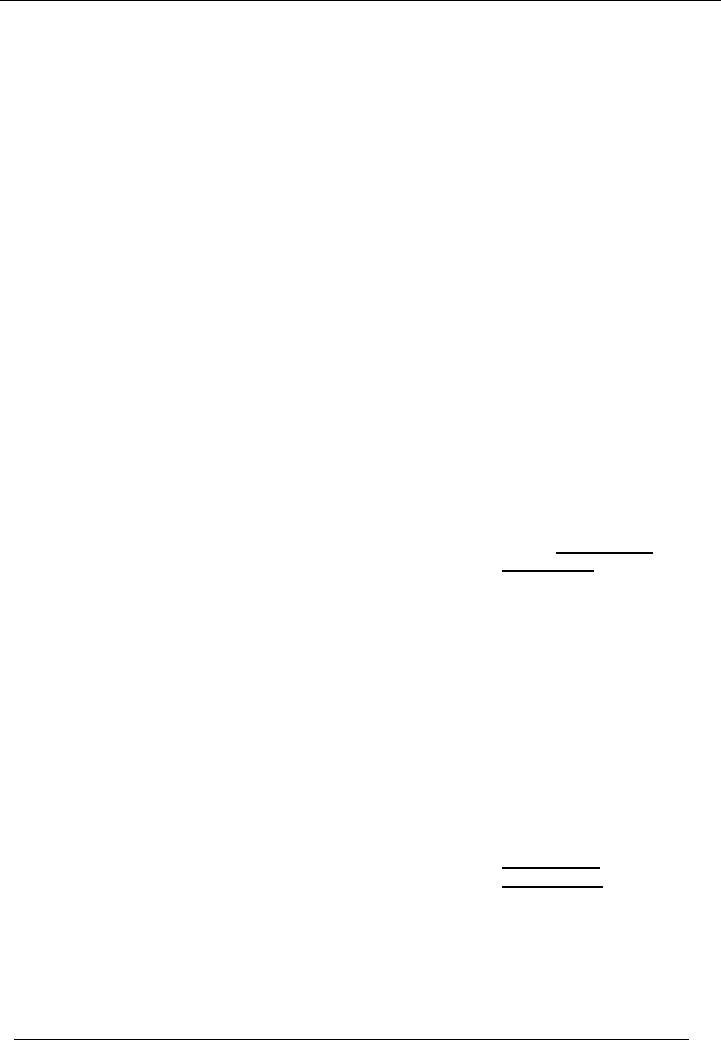 |
Accounting Examples with Solutions |
| << RECAP |
| RECORDING OF PROVISION FOR BAD DEBTS >> |

Financial
Accounting (Mgt-101)
VU
EXAMPLE
# 2
From
the following data ascertain the
balance as per bank
statement of Rashid & Co on March
31, 20--
· Balance
as per bank book Rs.
79,000
· Cheques
issued but not presented
for payment Rs.
24,000.
· Cheques
deposited but not cleared
Rs. 35,000
· Interest
on deposit was credited by bank but
not debited in bank book Rs.
1,000.
· A
customer paid into bank directly Rs.
13,000 but the same was
not recorded in bank
book.
· Other
receipts in bank that were
not recorded in bank book
Rs. 20,000.
SOLUTION
In
such an example, where bank
reconciliation statement is not required
the answer will show only
what is
required
i.e. the balance that should
appear in Bank Statement. Whereas, the
reconciliation statement is
prepared
in WORKING
/ Rough
Work
Let's see the
solution now:
Rashid
& Co.
Balance
As per Bank Statement Rs.
80,000
WORKING
Balance
as per Bank Book
79,000
1
Add Un
presented cheques
24,000
2
Less
Un credited cheques
(35,000)
3
Add
Interest received
1,000
4
Add
amount deposited by customer
13,000
5
Add
other receipts in bank
20,000
Balance
as per bank statement
102,000
As this is a
working, therefore, we have put
all the items in the statement. If the
question had required the
adjusted
bank book balance, then, we would
have adjusted items 3,4
and 5 first and then
prepared the
reconciliation
statement.
Similarly the
question could have given us the balance
as per bank statement and required us to
calculate
bank
book balance.
Let's see
how we will work out the
balance of bank book:
Rashid
& Co.
Balance
as per Bank Statement
102,000
1
Less
Un presented cheques
(24,000)
2
Add Un
credited cheques
35,000
3
Less
Interest received
(1,000)
4
Less
amount deposited by customer
(13,000)
5
Less
other receipts in bank
(20,000)
Balance
as per bank book
79,000
163

Financial
Accounting (Mgt-101)
VU
RECTIFICATION
OF ERROR
In the
beginning of this lecture, we also
said that one reason
for a difference between balance of bank
book
and
bank statement could be a mistake made by
us in recording transactions. Such
differences are
removed
by making an
adjusting entry through Journal
Voucher, which is also
called rectification of error.
Any
other error when rectified /
corrected would also be
termed as Rectification of Error.
For
Example, assume that we received
cash Rs. 50,000 from a
debtor and instead of
Debiting the Cash
Book
/ Cash
Account, we debited the Bank Book.
Whereas, the credit was given to the
correct account. Now
we
have
overstated bank book by Rs.
50,000 and understated the
cash book by the same amount. To
correct
this, we
will have to reduce / credit bank
and increase / debit cash by
Rs. 50,000.
So the
entry will be:
Debit
Cash
Account
50,000
Credit
Bank
Account
50,000
After
posting this transaction, our bank book
will be reconciled if all
other items have been
taken into
account.
We can
prepare a general procedure
for rectification of
errors.
Step
1
Note
down the correct
entry
Debit:
Cash
50,000
Credit:
Creditors
50,000
Step
2
Note
down the incorrect entry
Debit:
Bank
50,000
Credit:
Creditors
50,000
Step
3
See
that Credit effect is correct. In
case of Debit, effect has
been given to Bank, instead
of
cash.
Therefore, we will give the due effect to
Cash by debiting it and
Remove the incorrect
effect
from bank by crediting
it.
Debit:
Cash
Account
50,000
Credit:
Bank
Account
50,000
This
is one type of error where
entry has been posted in
incorrect account but with the
correct amount.
Other
errors that may occur
while recording are as
follows:
· A
transaction is completely omitted. For
example, in our above
examples, we had not
recorded the
bank
charges or the payment made by
our customers directly in
our bank.
· This type of
errors is simple to rectify.
The entry that was required
at the time of event is recorded
when
it comes to our knowledge.
·
The
entry is recorded in correct
account but with incorrect amount.
For example, Electricity
bill of
Rs.
1000 paid in cash is recorded as
Rs. 100 in correct head. In
this case, rectification will be done
by
following
entry:
Debit
Electricity
900
Credit
Cash
900
(This
will increase the expense to
Rs. 1000 and decrease the
cash to the correct amount.)
164

Financial
Accounting (Mgt-101)
VU
·
On the
other hand, if the entry was
recorded at 10,000. Then a
reversal entry will be
posted to
correct
the effect.
Debit:
Cash
9000
Credit:
Electricity
9000
·
Another
type of error could be Wrong Head of
Account with wrong amount.
For example,
Purchase
of vehicle worth Rs. 500,000
through cheque is recorded as
vehicle repair Rs.
50,000.
· The
Correct Entry would have
been:
Debit:
Vehicle
500,000
Credit:
Bank
500,000
· The
wrong entry that we posted
is:
Debit:
Vehicle
repair
50,000
Credit:
Bank
50,000
· Rectification
will be as follows:
Debit:
Vehicle
500,000
Credit:
Bank
450,000
Credit:
Vehicle
Repair
50,000
We
can, therefore, use this method to
rectify any mistake.
165
Table of Contents:
- Introduction to Financial Accounting
- Basic Concepts of Business: capital, profit, budget
- Cash Accounting and Accrual Accounting
- Business entity, Single and double entry book-keeping, Debit and Credit
- Rules of Debit and Credit for Assets, Liabilities, Income and Expenses
- flow of transactions, books of accounts, General Ledger balance
- Cash book and bank book, Accounting Period, Trial Balance and its limitations
- Profit & Loss account from trial balance, Receipt & Payment, Income & Expenditure and Profit & Loss account
- Assets and Liabilities, Balance Sheet from trial balance
- Sample Transactions of a Company
- Sample Accounts of a Company
- THE ACCOUNTING EQUATION
- types of vouchers, Carrying forward the balance of an account
- ILLUSTRATIONS: Ccarrying Forward of Balances
- Opening Stock, Closing Stock
- COST OF GOODS SOLD STATEMENT
- DEPRECIATION
- GROUPINGS OF FIXED ASSETS
- CAPITAL WORK IN PROGRESS 1
- CAPITAL WORK IN PROGRESS 2
- REVALUATION OF FIXED ASSETS
- Banking transactions, Bank reconciliation statements
- RECAP
- Accounting Examples with Solutions
- RECORDING OF PROVISION FOR BAD DEBTS
- SUBSIDIARY BOOKS
- A PERSON IS BOTH DEBTOR AND CREDITOR
- RECTIFICATION OF ERROR
- STANDARD FORMAT OF PROFIT & LOSS ACCOUNT
- STANDARD FORMAT OF BALANCE SHEET
- DIFFERENT BUSINESS ENTITIES: Commercial, Non-commercial organizations
- SOLE PROPRIETORSHIP
- Financial Statements Of Manufacturing Concern
- Financial Statements of Partnership firms
- INTEREST ON CAPITAL AND DRAWINGS
- DISADVANTAGES OF A PARTNERSHIP FIRM
- SHARE CAPITAL
- STATEMENT OF CHANGES IN EQUITY
- Financial Statements of Limited Companies
- Financial Statements of Limited Companies
- CASH FLOW STATEMENT 1
- CASH FLOW STATEMENT 2
- FINANCIAL STATEMENTS OF LISTED, QUOTED COMPANIES
- FINANCIAL STATEMENTS OF LISTED COMPANIES
- FINANCIAL STATEMENTS OF LISTED COMPANIES